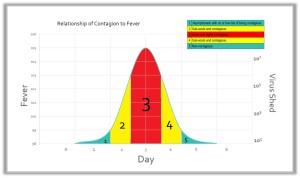We have always advocated that screening for fever is the most effective way to end epidemics. In order to achieve this you must have a good understanding of the pathways of Healthcare Associated Infections (HAIs). Coughing and sneezing are visible signs of spreading but contagion is invisible and can circulate for days or weeks in a hospital. Contagion can be deposited by patients and more importantly sick-non patients during a hospital visit.
As was seen in the first US MERs case an infected healthcare worker carried the disease from a Saudi Arabian healthcare facility to a US hospital. In most parts of the world there are no check points to monitor the health of individuals that travel. However, the hospital is vigilant to establish infection prevention programs to prevent disease spread which empowered Orlando hospitals to isolate over 20 healthcare workers during the second US MERs case.
Thermal screening as done today in airports does not stop infection spread. Both the equipment and methods used are inaccurate and fail to screen out the sick. Studies have shown that twice-daily fever screenings in hospitals of non-patients end the SARS Singapore epidemic of 2003. Fever screening at airports and schools only revealed a few infected individuals; however, screening for fever at hospitals showed that 25% of fevered non-patients had SARS. As a side benefit, fever screening prevented the spread of four times non-SARs contagion.
Temperature screening of non-patient populations stopped the spread of SARs in both the hospital and the community and it can do the same for MERs. Temperature screening is important when performed properly with accurate equipment.
Read more Wello literature and view sources at “Temperature Screening is Infection Control.”

